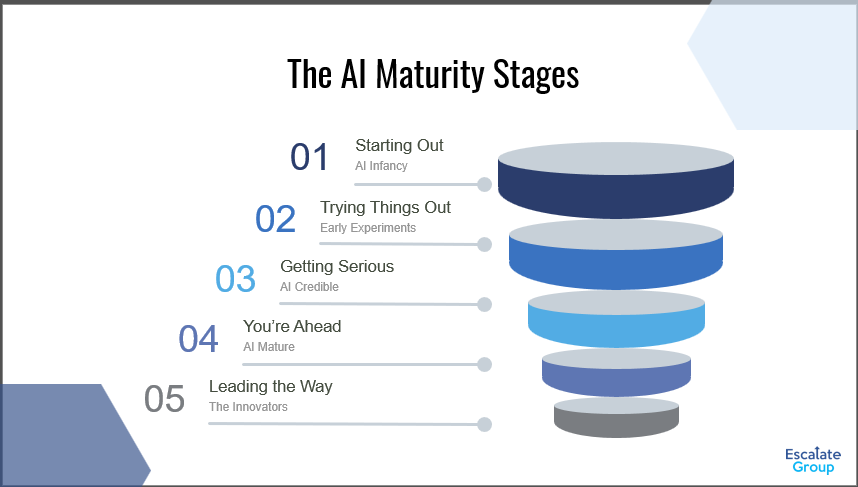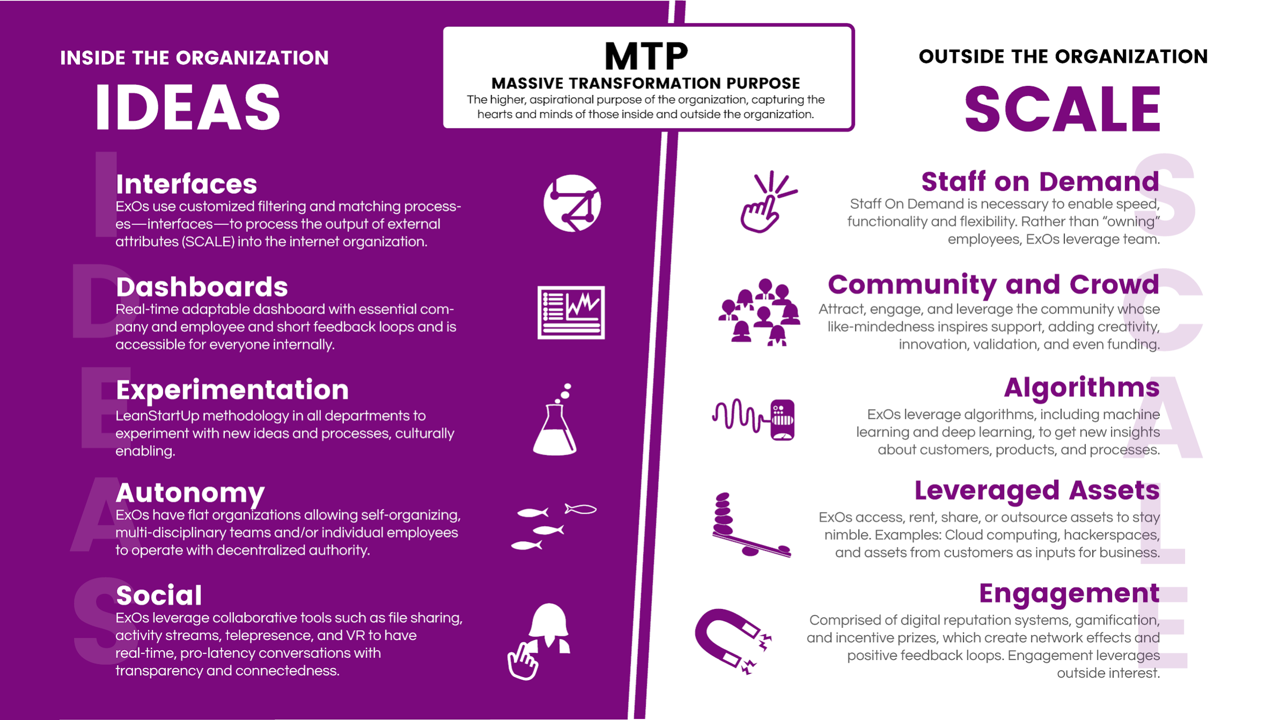How AI Transforms Team Collaboration and Innovation
October 28, 2025

AI is transforming how teams think, collaborate, and innovate. Explore how human AI co-creation reduces stress, boosts creativity, and reshapes organizational culture and what leaders can do to accelerate the shift.
Introduction:
Escalate Group has long emphasized that meaningful transformation begins with people, not tools. Insights from Harvard Business School’s When AI Joins the Team, Better Ideas Surface reinforce a pattern often seen across transformation initiatives: AI reshapes how teams think, connect, and innovate together. The impact goes far beyond automation. It influences how individuals collaborate, generate ideas, and gain confidence in their own creativity, as highlighted in the Harvard Business School research.
As organizations integrate data, AI, and new digital capabilities, the most significant breakthroughs emerge when teams approach AI as a creative partner, one that expands human capacity rather than replacing it.
To explore how digital transformation accelerates this shift, see our AI transformation approach.
What the Research Shows and Why It Matters
The Harvard study, conducted with Procter & Gamble, engaged nearly 800 professionals who generated ideas with or without AI support, individually or in teams. The findings reflect a clear trend:
- Teams using AI were three times more likely to produce top-tier ideas.
- Individuals collaborating with AI matched the performance of two-person teams without it.
- AI-assisted work finished 13–16% faster.
- Stress decreased, and engagement rose once participants gained confidence with the technology.
These results mirror what is happening in organizations adopting AI today. When technology helps teams explore possibilities, connect diverse insights, and test ideas with less friction, creativity becomes more natural—and more frequent.
Beyond the Data: The Human Dynamics of Innovation
The research reveals a truth that consistently surfaces in transformation efforts: the most significant barrier to innovation is rarely the technology—it is the human response to it.
- AI can help teams become braver, not just more efficient.
Early stages of AI adoption often involve uncertainty. People question whether the technology will outperform them, expose weaknesses, or disrupt their roles. This emotional hesitation is common.
But as teams begin experimenting and see AI broadening their perspectives, hesitation gives way to curiosity. Work feels less constrained. Ideas expand. Risk-taking becomes more comfortable.
This shift appears across industries:
- In e-commerce, AI improves personalization and accelerates experimentation cycles.
- In financial services, AI blends behavioral and risk data to reveal opportunities that might otherwise go unnoticed.
These changes strengthen not just productivity, but creative confidence.
- Co-creation between humans and AI unlocks deeper insights.
Once trust develops, teams move beyond simple AI assistance and step into co-creation.
Here, humans and algorithms iterate together, challenging assumptions and strengthening ideas.
Further insights from MIT Sloan show that human–AI partnerships generate the strongest outcomes when people and AI complement each other’s strengths rather than overlap roles. The principle is simple: humans bring context, imagination, and judgment; AI brings pattern recognition, scale, and speed. Together, they elevate the quality of thinking.
- Emotional readiness is a vital indicator of transformation.
One of the study’s most important insights is emotional: stress drops and engagement rises once individuals feel supported by AI rather than judged by it.
This shift is not a minor detail; it is a critical marker of readiness. When people feel safe to explore, question, test, and revise ideas, collaboration becomes lighter and innovation more fluid.
Tracking how teams feel, not just what they produce—provides leaders with a clearer measure of progress.
What Leaders Can Do Now
Moving from AI adoption to AI-enabled transformation requires rethinking how teams work and learn. Four leadership shifts help accelerate this journey:
- Treat AI as a teammate.
Ask how teams can work differently with AI, not just what AI can automate.
- Invest in human capability.
Training people to prompt, iterate, and collaborate with AI reduces friction and builds confidence.
Programs such as ExO Sprints can help teams rapidly build these new capabilities.
McKinsey’s research on the human side of AI adoption shows that organizations achieve greater productivity when they design jobs that put people before technology, empowering teams to focus on creativity and collaboration.
(See: McKinsey – The Human Side of Generative AI.)
- Redesign workflows for co-creation.
Structure work so humans and AI contribute continuously rather than sequentially.
- Measure emotional engagement.
Curiosity, confidence, and psychological safety are essential ingredients for sustained innovation.
These shifts are cultural in nature, and leadership sets the tone.
From Compliance to Ownership
Transformation efforts often begin with compliance: employees follow new steps and tools because they must. But true momentum arrives when people experience how AI makes their work easier, clearer, or more interesting.
The moment the question changes from “Do I have to use this?” to “What else can this enable?” the transformation becomes self-sustaining.
That spark where AI becomes an ally rather than an obligation is the turning point every organization aims to reach.
Conclusion: The Future of Collaboration: Human + Machine
Organizations that thrive in the next era will not rely on AI as a standalone solution. They will reimagine collaboration itself. The future is not about choosing between human intelligence and artificial intelligence but about integrating both.
The Harvard study offers a preview of this reality: AI will sit alongside every team, from strategy to operations to product development, supporting insight, creativity, and decision-making.
The critical question for leaders is no longer if AI will join their teams, but how prepared their people are to partner with it.
Organizations preparing for this journey can explore next steps with our team at Escalate Group.









